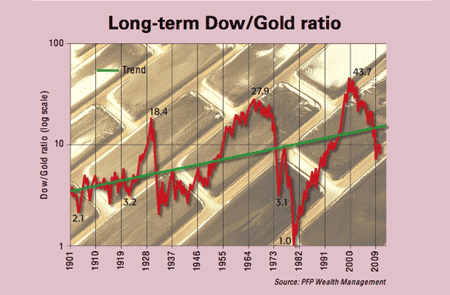
Just 11 weeks after reaching a record of $1,265 an ounce, gold has clambered to new highs. It has risen to almost $1,300, taking its gains this year to 16%. Since the long bull market began in 2001, it has risen fivefold. The silver price has risen with gold, edging up to 30-year highs around $21 an ounce this week.
Banks and producers are buying
A “whirlwind of factors”, as Suki Cooper of Barclays Capital puts it, have underpinned the latest move and bode well for further gains. Recently Bangladesh Bank, the country’s central bank, bought ten tonnes of gold from the IMF. That underlines the fact that central banks in emerging markets are “keen to add more gold to their reserves”, says David Levenstein on Mineweb.co.za.
The latest fillip is also due to AngloGold Ashanti, the world’s third-biggest gold miner, winding up its hedge book. During the long bear market pre-2001 the industry hedged against further falls in the gold price by borrowing gold from central banks and selling it.
Over time, it has largely unwound its short sales as the price has taken off. Last November, industry leader Barrick Gold said it had unwound the last of its hedges. All this shows that major producers don’t expect the price to fall back significantly any time soon. It also gives demand a short-term boost, notes Walter de Wet of Standard Bank.
The ultimate currency
Gold remains in demand as a safe haven as it has become clear that “the West’s economic malaise is continuing”, says Lawrence Williams on Mineweb. Along with fears of a double dip, eurozone debt worries have resurfaced. And the Basel III capital regulations for banks do little to preclude another crisis.
The key element of the safe-haven angle, however, is the fact that gold is once again being seen as the ultimate currency – one that can’t be debased by being reproduced at the touch of a button. The basic problem is that having bailed out the financial system, Western governments are buckling under so much debt that they have “no option” but to “inflate their problems away”, as Tim Price of PFP Wealth Management puts it. And that’s whether we experience deflation first or not. Talk of yet more quantitative easing in Britain and America is the latest incentive for investors to put their faith in gold rather than paper money.
Silver to follow gold upwards
Investors are unlikely to stop worrying about the global economy any time soon. Tight supplies and the Dow/Gold ratio (the Dow’s price divided by gold’s), a widely watched gauge of the relative value of stocks and gold, also suggests further upside (see chart above). At previous gold market peaks or equity market lows the Dow/Gold ratio has been under three, notes Price. It’s currently at a heady 8.3, suggesting gold has further to go.
In addition, there has been no sign of the mad rush into gold that characterised the final phase of the bull run that peaked in 1980, as we pointed out last week. Given all this, gold’s bull run is set to continue. Barclays Capital, for one, sees gold averaging $1,300 an ounce in the first quarter of next year.
Further gains for gold also bode well for silver, as it is a traditional safe haven as well as an industrial metal. Silver has “always been a currency”, says Eric Sprott of Sprott Asset Management. DZ Bank’s analysts reckon silver could ultimately reach $25 an ounce. But be warned – it is extremely volatile and can slide as fast as it shoots up. Investors can track the gold and silver spot prices through the London-listed ETFs PHGP and PHSP respectively.